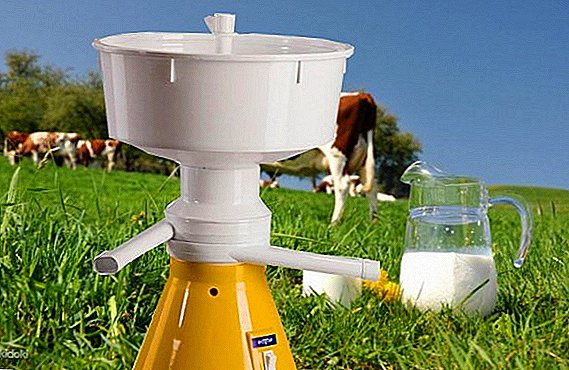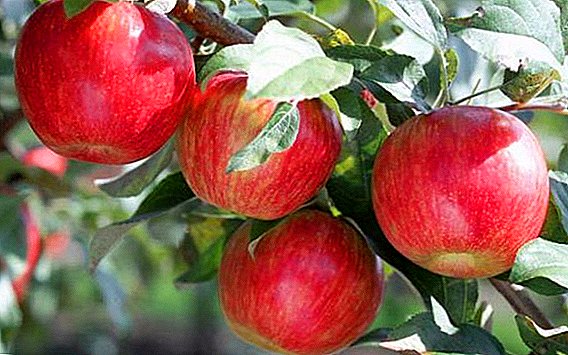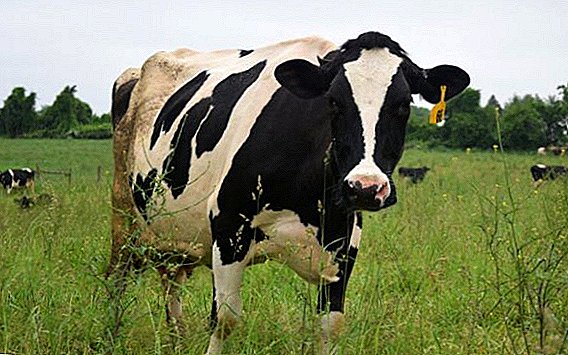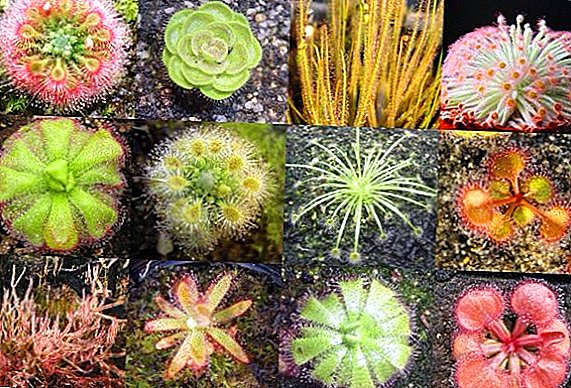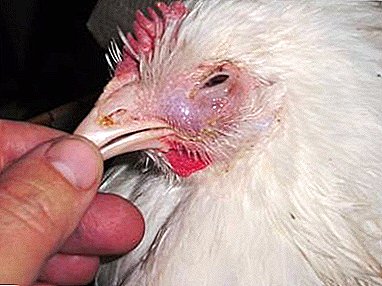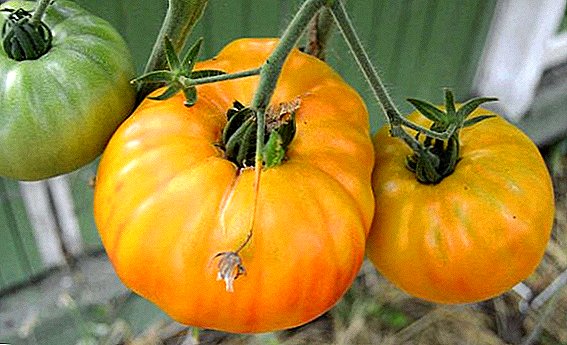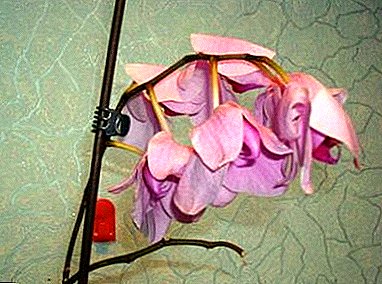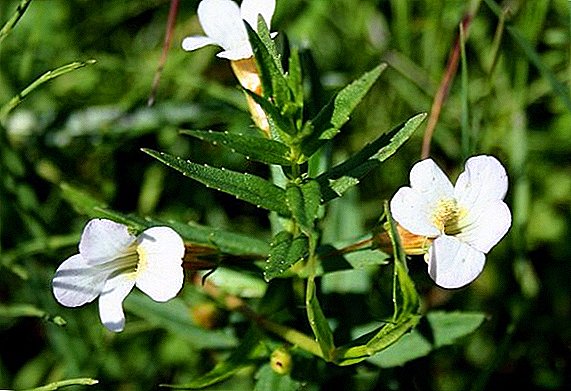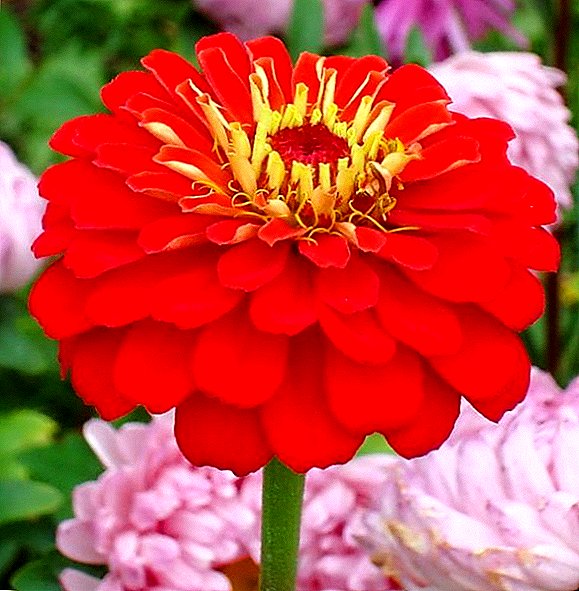 Zinia (Latin name - Zinnia) - genus of perennial and annual herbs and dwarf shrubs of the Astrovye family. Named plant in honor of the German doctor and botanist Johann Gottfried Zinna, and is considered the birthplace of South Mexico.
Zinia (Latin name - Zinnia) - genus of perennial and annual herbs and dwarf shrubs of the Astrovye family. Named plant in honor of the German doctor and botanist Johann Gottfried Zinna, and is considered the birthplace of South Mexico.
Did you know? The Aztecs cultivated zinnia back in 1500, and it came to Europe in the 18th century and almost immediately became a favorite decoration of gardens and notable receptions. In the twentieth century, zinnia was already cultivated on all continents, and even was a symbol of one of the states of America - Indiana.
Sowing tsiniya seeds in open ground
Zinnias, known by the usual name of the majors, and in their diversity, were loved by many flower growers and fans of ornamental plants. It is impossible to find a garden in which this culture would not grow. Zinia does not require special care, and growing it from seeds is a very simple process that many gardeners like. Growing zinnia is a fascinating process: the seeds are round and working with them is quite easy. However, planting and caring for flowers still have certain features.
Terms for sowing
 Of course, if you want the flowers to please you with their beauty as soon as possible, you need to choose the right method and determine the timing of planting. Grow zinnia on your site in several ways:
Of course, if you want the flowers to please you with their beauty as soon as possible, you need to choose the right method and determine the timing of planting. Grow zinnia on your site in several ways:
- sow seeds at home (seedling method);
- sow the seeds under the open sky (right on the garden bed).
In order to determine which zinnia seeds are viable, they are wrapped in gauze or cloth soaked in epin before planting. Fresh seeds spit up after a couple of days, and for old ones it may take a week.
Place for tsiniya on the site
Since zinnia is a heat- and light-loving plant, its cultivation should take place in a place not shaded and abundantly lit by the sun.
Important! It is advisable to avoid drafts so that the wind does not damage the stems.
 A friable, fertile soil will be suitable as a soil, and before planting it is necessary to clean the area from weeds. Due to the fact that zinnia reacts negatively to the stagnation of moisture in the soil, you can add a little sand or sod land during planting. So you dilute the soil and prevent stagnant water.
A friable, fertile soil will be suitable as a soil, and before planting it is necessary to clean the area from weeds. Due to the fact that zinnia reacts negatively to the stagnation of moisture in the soil, you can add a little sand or sod land during planting. So you dilute the soil and prevent stagnant water.
The scheme of sowing seeds on the garden
Before the direct planting of seeds in open ground, the area should be covered with insulating synthetic fabric. This will create a greenhouse effect and slightly retain moisture in the soil.
Planted tsinii on a bed can be any geometric pattern: in a circle, in a checkerboard pattern or around the perimeter. The main thing - it is necessary to take into account varieties, so that the bed looks harmonious.
The depth of the wells should be about 5 cm, and several seeds can be placed in one well. The distance between the holes should be about 10 cm.
Important! If the time for planting is chosen correctly, the first shoots will appear in a week.
In order to grow full-fledged flowers, after germination, thinning of the bushes should be carried out, leaving a distance of 30 cm between them, and 20 cm for low-growing plants.
Shelter of the first shoots zinnia
So that the likely frosts do not damage the shoots, they are recommended to be covered with special material.
Basics for the care of majors
 Care for the ascended zinnia does not depend on how the planting occurred. The main thing is to provide the flowers with sufficient watering (at the root), fertilizing, regular loosening, weeding, as well as getting rid of pests and treatment. That is, there is a special agrotechnology for growing zinnia.
Care for the ascended zinnia does not depend on how the planting occurred. The main thing is to provide the flowers with sufficient watering (at the root), fertilizing, regular loosening, weeding, as well as getting rid of pests and treatment. That is, there is a special agrotechnology for growing zinnia.
Did you know? Flower life is 35 days, and picked zinnias can stand in a vase for 2 weeks.
Pinching the tops
Beginner gardeners often have the question "How to pinch zinnia and should it be done?". To plant the bush, this procedure is really necessary to carry out.
As soon as the flowers take root and grow, they need to pinch the top of the head, with the result that the bushes will become more branchy and lush. This is done on the third or fourth pair of leaves. However, if you want to grow elegant zinnias on long peduncles, you do not need nipping.
Watering and loosening the soil
 In watering zinnia requires a special approach, because it does not tolerate an excess of moisture, which can cause rotting of the roots. The lack of moisture, in turn, will slightly affect the plant, since it belongs to drought-resistant species.
In watering zinnia requires a special approach, because it does not tolerate an excess of moisture, which can cause rotting of the roots. The lack of moisture, in turn, will slightly affect the plant, since it belongs to drought-resistant species.
For majors suitable rare, but abundant watering, the mode of which depends on the climatic conditions of the region in which they are grown.
Important! When watering it is necessary to ensure that water does not fall on the peduncle, as this may provoke flower rotting.
After rainy days it is necessary to remove the flowering inflorescences so that the flowering is more abundant and lasts longer.
Plant nutrition
The soil in the place where zinnia is planned to grow can be any. However, on fertile grounds, the flower grows much better. Land can be fertilized before direct sowing of majors in open ground. To do this, they dig up the plot and bring in compost (humus, peat) at the rate of 8-10 kg per 1 m², mixing it up well and loosening the soil after that.
You can use mineral fertilizers. In this case, with a calculation of 1 m², you will need:
- 1 tbsp. spoon of potassium sulfate;
- 1 tbsp. spoon superphosphate;
- 1 tbsp. spoon nitrofoski.
Collecting and storing seeds
 Zinnia seeds ripen within two months after the start of flowering. Therefore, it is not surprising that many gardeners are interested in how to harvest tsiniia seeds on their own ?. First of all, you should wait until the seed boxes are fully ripe and their color turns brown.
Zinnia seeds ripen within two months after the start of flowering. Therefore, it is not surprising that many gardeners are interested in how to harvest tsiniia seeds on their own ?. First of all, you should wait until the seed boxes are fully ripe and their color turns brown.
Important! In shoots of the first order, the seeds have the best qualities, so all lateral shoots should be removed from the specimens selected in advance.
Box carefully, sharp scissors, cut from the stem and dried. Dry seeds are removed on a piece of paper, which can then be used as an envelope for storage, and cleaned of dried flower residues. Store in a dry place at a constant temperature. Seed germination lasts 3-4 years.
Tsiniya
For seedlings planted in mid-April. The plant quickly gains height, therefore, if planted earlier, by the time of landing in the ground zinnia can acquire buds, which during transportation can be damaged. In addition, the adult plant is worse mastered in a new place.
For seedlings, you need to take a large container (the depth is not less than 10 cm) and since the seedlings are large, they are placed in the ground at a distance of 2-3 cm from each other, the sowing depth is not more than 1 cm. .
 After 3-4 days, shoots will appear and the film can be removed. Do not overwhelm tsinii - the soil should be slightly damp, and The optimum temperature for germination of zinnia is + 22 + 24 ºC. After the plants grow to 10 cm, they need to dive into separate pots. To root the system well, the main root is pinched by 1-2 cm. 2 weeks before planting in the ground, you need to start “walking” the plant, bringing it to the balcony in warm weather. Thus, the shoots will harden and strengthen.
After 3-4 days, shoots will appear and the film can be removed. Do not overwhelm tsinii - the soil should be slightly damp, and The optimum temperature for germination of zinnia is + 22 + 24 ºC. After the plants grow to 10 cm, they need to dive into separate pots. To root the system well, the main root is pinched by 1-2 cm. 2 weeks before planting in the ground, you need to start “walking” the plant, bringing it to the balcony in warm weather. Thus, the shoots will harden and strengthen.
Problems growing tsiniya
How to deal with pests
Pests can sometimes attack zinnia such as:
- slugs;
- aphid;
- snails.
With gastropods struggle with ploshek with beer, placed on the site. You can scatter pieces of roofing material or slate between seedlings - clams love to crawl there and can be assembled by hand.
To combat aphids, zinnia is treated with a solution of tar soap (10 g per 1 liter of water). If the infection was significant, apply the solution "Fufanon" or "Aktellika", prepared according to the instructions.
How to deal with diseases
Zinia, like many cultures, can be subject to various diseases:
- gray rot;
- Fusarium;
- bacterial blotch;
- powdery mildew.
 If the weather is wet and cool, powdery mildew may appear on the zinnia - a grayish-white coating on the stalks and leaves. Struggling with it by reducing watering. Even if one leaf of the plant is covered with gray-brown round spots (bacterial spot), it is necessary to take urgent measures. Break off the infected leaves, and in case of excessive infection completely destroy the plant - there is no cure for this disease.
If the weather is wet and cool, powdery mildew may appear on the zinnia - a grayish-white coating on the stalks and leaves. Struggling with it by reducing watering. Even if one leaf of the plant is covered with gray-brown round spots (bacterial spot), it is necessary to take urgent measures. Break off the infected leaves, and in case of excessive infection completely destroy the plant - there is no cure for this disease.To combat gray rot, powdery mildew and Fusarium, fungicides ("Fundazol", "Topsin-M") are used.
Did you know? Zinia diseases occur, first of all, in violation of plant care (thick planting, excessive watering). Therefore, it is necessary to promptly identify the problem and fix it. Only in this way can you avoid trouble later.
As you can see, the care of zinnia is somewhat peculiar, although the landing does not amount to any particular difficulties. After reading this article, you can safely buy seeds and start growing this beautiful flower.


